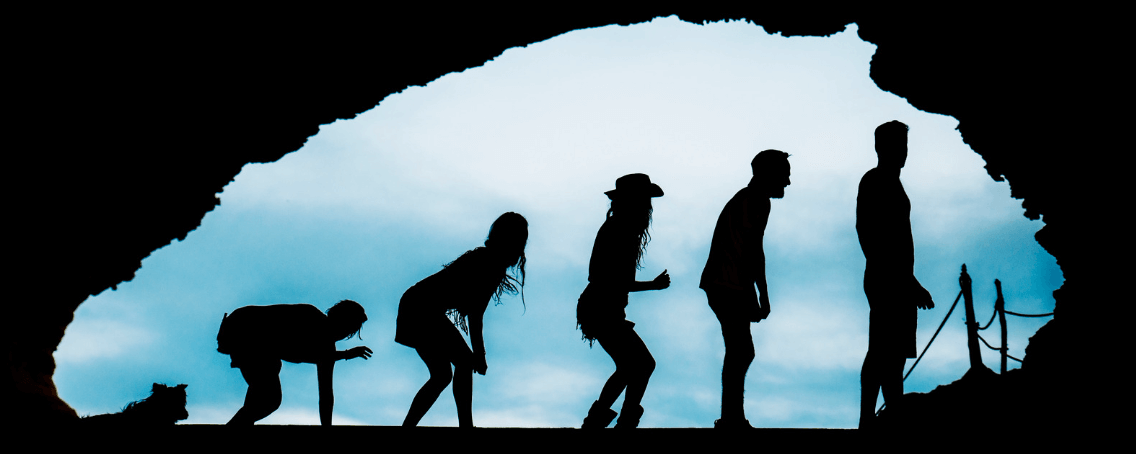COMEDY COURSE HOME | COMEDY BASICS | COMEDY WRITING | COMEDY PERFORMANCE | THE COMEDY BUSINESS | PRO COMEDIAN TIPS | HISTORY OF COMEDY | OTHER RESOURCES & MISC BITS

The Evolution of Stand-Up Comedy
Stand-up comedy, despite its humble format of a lone individual on stage, has managed to thrive in a world filled with big-budget movies and elaborate productions. This art form, which centres around making audiences laugh, offers a unique connection and authenticity that other forms of entertainment often lack.
In this article, we will explore the history of stand-up comedy, its origins in lectures and vaudeville shows, its evolution through different eras, and its recent adaptation to online platforms.

The Three Rules of Stand-Up Comedy
According to Dr. John Limon, a professor of English at Williams College, stand-up comedy can be distilled down to three simple rules:
- If you think something is funny, it is
- A joke is funny if and only if you laugh at it
- Your laughter is the ultimate goal of stand-up comedy.
With these rules, stand-up comedy embraces authenticity and relies on the connection between the performer and the audience to achieve its objective: making people laugh.
The Origins: Artemis Ward and Mark Twain
Stand-up comedy as we know it today has its roots in the 19th century. The first recorded stand-up performance took place in 1861 when Charles F. Brown, known as Artemis Ward, delivered a humorous lecture titled “Babes in the Wood.”
Ward’s deadpan delivery and comedic tangents set the stage for future stand-up comics. His style inspired Mark Twain, who also ventured into stand-up comedy, using humour as a powerful tool to engage audiences and challenge societal norms.
The Influence of Minstrel Shows
To fully understand the history of stand-up comedy, it’s essential to acknowledge the influence of minstrel shows. These shows, popular in the mid-1800s, featured white actors in blackface, perpetuating racial stereotypes for entertainment.
While minstrel shows were deeply problematic and dehumanising, they played a significant role in shaping American entertainment and influencing future forms of comedy, including stand-up.
Breaking Stereotypes: Bert Williams and Will Rogers
Bert Williams, an immigrant from the Bahamas, and Will Rogers, a Cherokee citizen, defied stereotypes and became pioneering figures in stand-up comedy. Williams and his partner George Walker subverted expectations by using classical stereotypical characters as references while delivering socially aware dialogue.
They offered authentic black voices on stage, challenging the prevailing racist depictions. Will Rogers, on the other hand, utilised topical political humour, becoming a folk hero and paving the way for future political comedians like David Letterman, Jon Stewart, and John Oliver.
Vaudeville Era: Clean Comedy and Variety Shows
Vaudeville, a popular form of entertainment in the early 20th century, played a crucial role in the development of stand-up comedy. These family-friendly variety shows featured comedians who performed comedy monologues, providing a low-cost and easily adaptable form of entertainment.
However, vaudeville comedians were subject to strict speech codes, leading to the proliferation of exaggerated racial and ethnic stereotypes in their acts. While vaudeville declined in the 1920s and 1930s, it laid the groundwork for the emergence of comedy clubs and stand-up as we know it today.
The Birth of Comedy Clubs and Stand-Up Boom
In the 1960s and 1970s, comedy clubs started to gain popularity, thanks to venues like The Improv in New York City. Comedy clubs offered a more intimate and interactive setting for stand-up comedians.
With the rise of late-night talk shows and increased exposure on television, comedians gained national recognition, attracting larger audiences. George Carlin’s uncensored comedy special on HBO in 1977 marked a turning point, paving the way for more irreverent and raw stand-up comedy.

Challenges and Adaptations
Stand-up comedy faced challenges in the 1990s due to market saturation and changing audience expectations. The influx of stand-up comedians transitioning to sitcoms caused a decline in the live comedy circuit.
However, the internet provided new opportunities for comedians to reach wider audiences through platforms like YouTube, podcasts, and streaming services like Netflix. In recent years, stand-up comedy has experienced a resurgence, with a new generation of comedians finding success and audiences enjoying a diverse range of comedic styles.
The Impact of the COVID-19 Pandemic
The COVID-19 pandemic presented unprecedented challenges for stand-up comedy. With live indoor performances on hold, comedians had to adapt to online platforms for their shows.
Outdoor performances, drive-in comedy shows, and streaming stand-up became the new normal. While these alternatives allowed comedians to continue performing, they lacked the immediate feedback and laughter of a live audience. Nonetheless, the pandemic highlighted the resilience and adaptability of stand-up comedy as an art form.
The Enduring Power of Stand-Up Comedy
Stand-up comedy has endured for centuries, evolving with each era and embracing new mediums. From its humble origins in lectures and vaudeville to its modern adaptations on streaming platforms, stand-up comedy continues to captivate audiences with its authenticity, connection, and ability to make people laugh.
As the world changes, stand-up comedy will undoubtedly find new ways to adapt and thrive, reminding us that sometimes all you need is a microphone and a good joke to create a memorable experience.

Learn more about the History of Comedy here
HISTORY OF COMEDY



